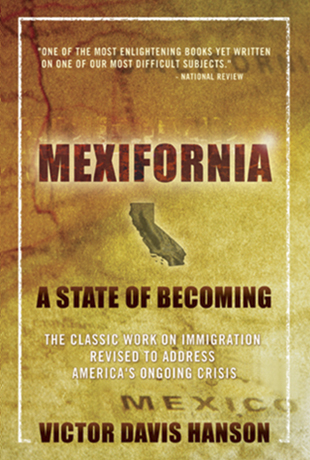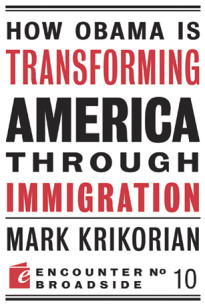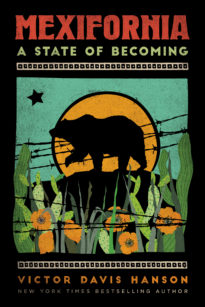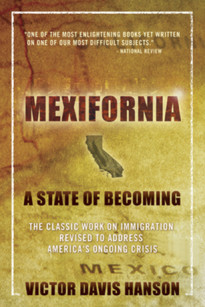Massive illegal immigration from Mexico into California, Victor Davis Hanson writes, “coupled with a loss of confidence in the old melting pot model of transforming newcomers into Americans, is changing the very nature of state. Yet we Californians have been inadequate in meeting this challenge, both failing to control our borders with Mexico and to integrate the new alien population into our mainstream.” Part history, part political analysis, and part memoir, Mexifornia is an intensely personal work by one of our most important writers.
Hanson is perhaps known best for his military histories and especially his social commentary about America and its response to terror after 9/11. But he is also a fifth-generation Californian who runs a family farm in the Central Valley and has written eloquent elegies for the decline of the small farm such as Fields Without Dreams and The Land Was Everything. Like these books, Mexifornia is an intensely personal look at what has changed in California over the last quarter century. In this case, however, Hanson’s focus is on how not only California, the Southwest, and indeed the entire nation has been affected by America’s hemorrhaging borders and how those hurt worst are the Mexican immigrants themselves. A large part of the problem, Hanson believes, comes from the opportunistic coalition that stymies immigration reform and, even worse, stifles an honest discussion of a growing problem. Conservative corporations, contractors, and agribusiness demand cheap wage labor from Mexico, whatever the social consequences. Meanwhile, “progressive” academics, journalists, government bureaucrats, and La Raza advocates envision illegal aliens as a vast new political constituency for those committed to the notion that victimhood, not citizenship, is the key to advancement.
The problems Hanson identifies may have reached critical mass in California, but they affect Americans who inhabit “Mexizona,” “Mexichusetts” and other states of becoming. Hanson writes wistfully about his own growing up in the Central Valley when he was one of a handful of non-Hispanics in his elementary school and when his teachers saw it as their mission to give all students, Hispanic and “white” alike, a passport to the American Dream. He follows the fortunes of Hispanic friends he has known all his life–how they have succeeded in America and how they regard the immigration crisis. But if Mexifornia is emotionally generous at the strength and durability of the groups that have made California strong, it is also an indictment of the policies that got California into its present mess. But in the end, Hanson strongly believes that our traditions of assimilation, integration, and intermarriage may yet remedy a problem that the politicians and ideologues have allowed to get out of hand.










